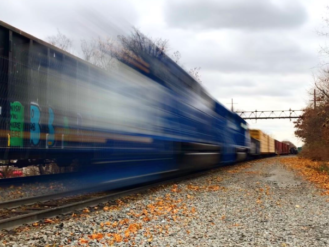The Brooklyn Tour Guides Who Know All the Secrets
Rejecting the double-decker-bus approach, Turnstile Tours gets up close and personal with its destinations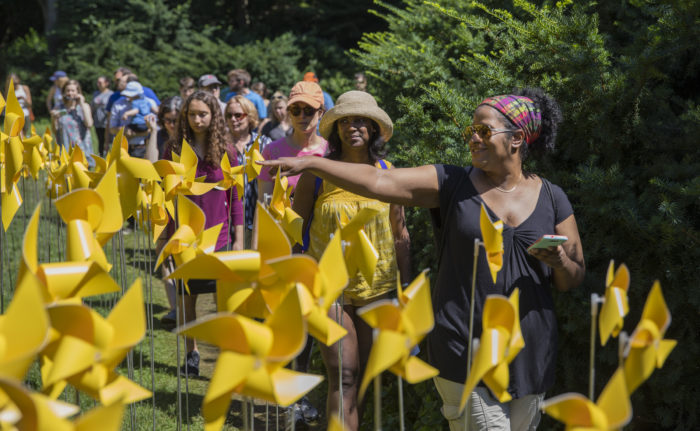
Turnstile tour participants make their way through a pinwheel exhibition in Prospect Park's Rose Garden. The 7,000-pinwheel installation was designed by architect Suchi Reddy and commemorates the park's 150-year history (Photo by Robert Nickelsberg)
As Brooklyn’s tourism industry heats up, double-decker buses have crossed the river in herds, whirling visitors around Grand Army Plaza and other dramatic sights. But to paraphrase the song from Hamilton, what’d they miss? Lots, according to Brooklyn-based Turnstile Tours, which has made a name for itself with a completely different approach: depth. On a Turnstile Tour of the cavernous Brooklyn Army Terminal, for example, you’ll find out that the massive base was once used as a storage warehouse for alcohol seized during Prohibition. Millions of gallons of booze were dumped into the harbor!
Turnstile’s tours offer so much fresh local color that 40% of its customers on their Brooklyn Navy Yard tours are people who already live in Brooklyn. The company’s immersive tours range across diverse subjects, from the industrial flavor of the Navy Yard to the food stalls of Williamsburg’s Moore Street Market. The team of five guides, who include founder Cindy VandenBosch and her husband Andrew Gustafson, strive to create intimate connections between the places they tour and the people they bring there. “Our tours are always a work in progress,” VandenBosch said. “By building a big body of knowledge, and working to bring new textures to each tour, we help the visitors really understand a sense of place.”
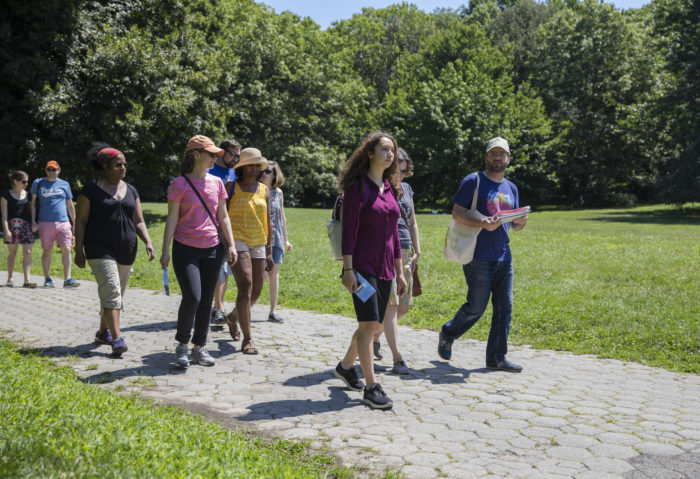
Eighteen people were guided through the park on a tour by Andrew Gustafson, far right, a vice president of Turnstile Tours and local historian. (Photo by Robert Nickelsberg)
That philosophy was on display one recent Sunday afternoon during a Brooklyn Navy Yard tour called Past, Present & Future, led by Gustafson. While telling of the yard’s architectural, military and industrial character, Gustafson played an oral-history recording by Carmela Celardo Zuza, a woman who worked as a welder inside the yard during World War II. (Interest in the Navy Yard is likely to spike in the fall, since bestselling Brooklyn author Jennifer Eagan has made it center stage in her forthcoming novel, Manhattan Beach.) On the Turnstile tour, a few participants shared their personal connections to the yard, creating a dialogue that the tour guides encourage. During the Moore Street Market tours, visitors engage with food vendors from Puerto Rico, the Dominican Republic, and Mexico while sampling their food.
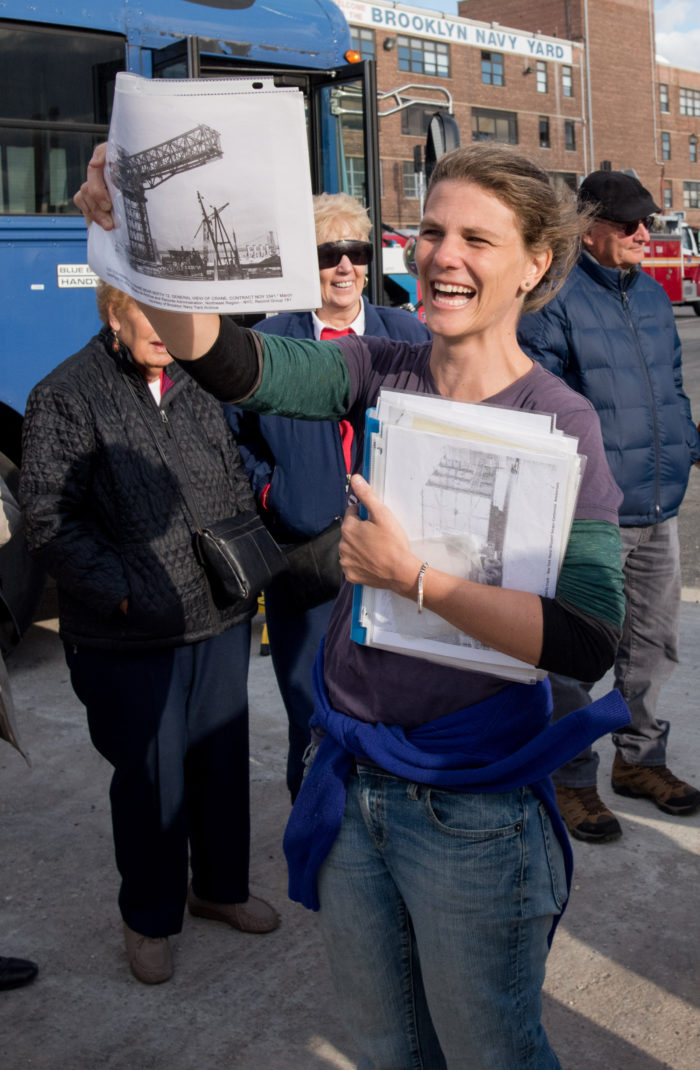
Turnstile Tours founder Cindy VandenBosch shows historical photos of a “hammerhead” crane during a tour of the Brooklyn Navy Yard (Photo courtesy of Brooklyn Navy Yard Development Corp.)
Proprietors VandenBosch and Gustafson are essentially historians with restless legs. A native of suburban Flint, Mich., VandenBosch studied anthropology at the University of Michigan and did her thesis research in Siberia before taking up a career that included a stint as tour manager of Manhattan’s Lower East Side Tenement Museum. Gustafson studied early American history at Middlebury College and later worked as a journalist in Moscow. An expert in cartography, he also describes himself as “an avid shipspotter, birdwatcher, and paddler.”
VandenBosch founded the company in 2011 with the idea that there was an opening in the business for an approach that blended appreciation for both community and place. “I always wanted to do tours that put a spotlight on underrepresented stories,” she said. “Companies will ask if we offer a three-hour tour of Brooklyn. But we have to explain that no, it’s not what we do.”
The immersive focus gives the company a niche position in a booming market. Despite concerns that President Trump’s travel ban and immigration policy would put a damper on New York City tourism, the city hasn’t lost its international magnetism. According to NYC & Co., the city’s travel-marketing arm, nearly 62 million visitors are expected to come to New York this year, about 1 million more than last year, setting a record for the seventh consecutive year. This May, the organization announced “‘New’ New York City,” a “five borough tourism infrastructure” to bring tourists to lesser-known areas of the city.
There’s still a challenge in the Brooklyn tourism industry, explained VandenBosch, and it’s that “people walk over the Brooklyn Bridge and then go back to Manhattan.” But that’s changing quickly. Mariela Estrella, director of tourism and business relationships for the Brooklyn Chamber of Commerce, says that the Turnstile team has helped promote the borough by taking part in the largest global travel convention, the annual IPW, alongside Explore Brooklyn.
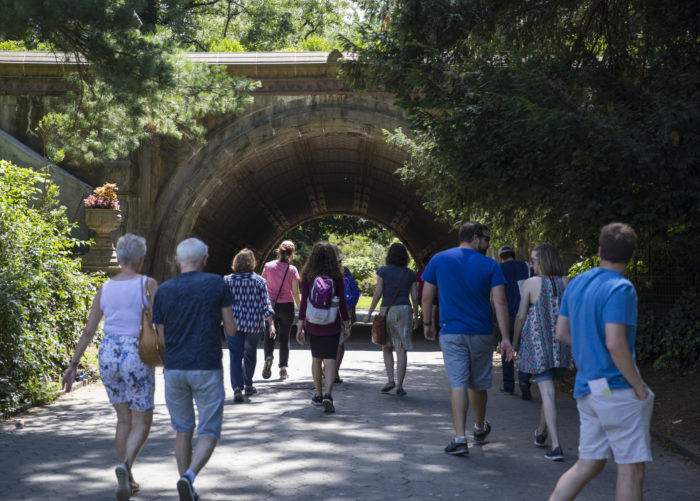
Prospect Park tour participants head through a stone archway. The 526-acre park opened in 1867 and was designed by landscape architects Frederick Law Olmsted and Calvert Vaux (Photo by Robert Nickelsberg)
Yet not everyone has welcomed the tourism growth, which is bringing buses and pedestrian hordes to Brooklyn neighborhoods where peace and quiet were part of their charm. VandenBosch is sensitive to that point, seeing an opportunity to “make sure the growth is managed in a way that benefits local employment and local business.” She continued, “It’s important to take control of the narrative locally. It shouldn’t feel like tourism is taking anything away from the people who live here.”
VandenBosch looks for creative ways to connect her tours into the borough as a whole: plugging local business, educating visitors on the diversity of Brooklyn, working with local nonprofits and organizations. On the Navy Yard tour, for example, Gustafson passed around a baby spoon produced inside the yard, a product of the yard’s renaissance as a manufacturing and technology center. Turnstile also works with the Brooklyn Navy Yard Corp. and Brooklyn Historical Society to preserve oral histories for the Brooklyn Navy Yard Oral History Project. The Moore Street Market tour is offered in partnership with the Graham Avenue Business Improvement District, while the company’s Prospect Park tours are the result of a partnership with the Prospect Park Alliance.
For the future, the company is exploring ways to utilize geo-location to best connect a tourist staying at a Downtown Brooklyn hotel to the Navy Yard, as well as a local restaurant on Myrtle Avenue,” according to VandenBosch. “We have to be looking at ways to plug in the mom-and-pops, the businesses that aren’t shown on major travel sites,” she said.
As a bonus, Gustafson offered four fascinating facts from Turnstile’s tours of famous Brooklyn locales:






